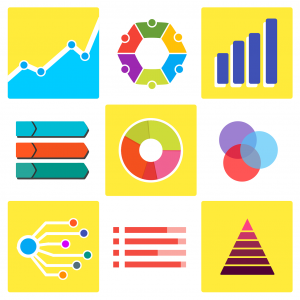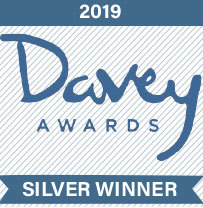The Dizzying World of Social Media
By Black Bear Design on 09/21/2016
Ahh, social media! It has exploded over the past decade, transforming from small platforms meant to encourage conversations among friends into a multi-billion-dollar industry that enables ads, brand communication, instant access and everything else businesses need to thrive on the internet. Just thinking about it has my head spinning. Social media, in the business sense, is not for the faint of heart. It requires constant monitoring, content creation and curation, and hours of management. Needless to say, it can be rather overwhelming.
The Hard Facts
Contrary to popular belief, social media requires much more than simply publishing content and talking with people. If you’re doing social media right, you spend hours researching your target audience, A/B testing ads and delving into the type of content your audience wants to see. After all, if you haven’t done your research, how can you expect to succeed?
Understanding your audience and what they want is crucial to your success on social media. If you’re a popular clothing brand, creating content centered around New York Fashion Week will work wonderfully. Articles about horticulture? Not so much. As a social media manager, it’s your job to investigate which content will resonate well with your audience, because social media is all about serving them. Research is indeed a time-consuming part of social media management, but the most important if you wish to succeed.
An Analytical Brain
I’m a creative at heart with a passion for social media. I can’t do math to save my life and struggle with being analytical. That being said, I have had to learn how to use the more analytical side of my brain to improve my social media efforts. Sound weird? The thing with social media is that success isn’t as easy to prove as with direct conversions on an e-commerce site. Without consistent measuring and analyzing, it can be pretty tough to prove to the skeptics that yes, social media is growing our business.
After you’ve researched your audience and the content they like, it’s time to measure whether or not your research was accurate. Think of this part of social media as a science experiment. You hypothesized that your audience wanted to see a mix of video and written content, but not a lot of education-heavy content. After a month, you look over the stats to examine whether you proved your hypothesis. Turns out, the written content and the GIFs garnered more impressions and engagement than all videos combined. After you’ve reached your conclusion, you can take these insights and adjust future content. Analytics are your best friend in the world of social media. The time spent analyzing will pay off in triples.
Ads Have Crossed Over
Unless you’re staunchly anti-social media, you’ve likely seen more than one ad in your Facebook newsfeed or Twitter feed. Ads made their way to social media a while ago, and thanks to their grand success, they’re here to stay. Social media managers, especially those managing multiple accounts, spend a great deal of time creating eight different versions of ad copy, A/B testing the effectiveness of an ad, and collaborating with the design team on imagery. It can be a time suck, but is also a fundamental part of any good social media strategy.
Once you’ve done some testing on your ads, you’ll need to go back to the analytical stage to see how your ads are performing. Social media is a very circular process, and nearly every aspect ends in analyzing data. Data science has become such a breakout career for exactly this reason!
Mix it Up!
Always remember that you’re on social media for your audience and that the content you publish should suit them. But you already know that because you’ve done your research and know what kind of content your audience likes to digest. But is it okay to post the same kind of content all the time? Yes and no. While some forms of content (GIFs) have a viral effect and will likely always garner engagement, it’s better to mix up the type of content you’re sharing.
Unless you’re Superwoman, you aren’t cranking out created content every day. There aren’t enough hours in the day to publish solely this kind of content. However, a mix of created and curated content adds a lot of diversity and value for your audience while taking a little of the burden off you to create. Curated content is content that’s not evergreen, but is still highly valuable to your audience. This could be another business’s blog, news articles or content from one of your followers. The important thing is that it still adds value.
The wonderful thing about curated content is that it can still be interesting to your audience while requiring almost no work to post. Always include some sort of caption with your curated content, but it doesn’t need to be a paragraph that is going to take a few to write. Leverage created and curated content along with images, GIFs and videos to have a truly diverse, interesting array of content that your audience will never bore of.
Get Ahead
As you can tell, social media is not an hour-a-day kind of feat. So, how do we manage to stay afloat and post consistently on our social media channels? By scheduling content in advance! We are by no means advocates of scheduling every post, auto-DMs or being robotic, but scheduling posts can really help lighten the load. If you spend an hour or so finding curated content and have a few blog posts already written, schedule these out in advance so you can spend more time creating content and engaging with your audience.
After you have scheduled posts for the week or month (content calendars are great for managing this), take time to scroll through your Twitter feed or Hootsuite stream or do a Twitter hashtag search to find content that you can engage with. Engaging with other brands and consumers allows you to be authentic, but also to raise brand awareness by getting your name out there with their audiences. Comment on their posts, share their content immediately and encourage them to communicate with you. These non-scheduled kinds of communication add in an authentic element as opposed to being a scheduled robot. Trust me, people can tell when everything is automated!
The Fun Side of Social
So, I know I’ve made it seem like social media is a lot of work, mostly because it is. But there’s a fun side of social media, too. Monitoring and managing social media is my favorite part of being a social media manager. It involves reputation management, engagement and proactive communication.
If you’re publishing quality content, you’re likely getting some form of engagement. If people are commenting, be sure to respond—whether that’s liking a comment or actually responding, it’s important to let your audience know you’re listening. Comment on your audiences’ posts and share their content. Address all negative comments and view it as an opportunity to show superior customer service. Listen for conversations that relate to your brand and jump in on conversations. Most importantly, act like a human instead of a brand. As I always say, social media is about being social. No sales pitches, no HR-approved robotic responses. Just you, a human, talking with another human.
Um, Help?
Social media is a fun, exciting, absolutely overwhelming task. You’ll spend your days doing everything under the sun, hopefully having fun while doing it. But if you’re feeling as dizzied as I am after writing this post, come say hi and we’ll help get you on your feet. Our comprehensive social media solutions take the stress out of social media so you can focus on running your business.













